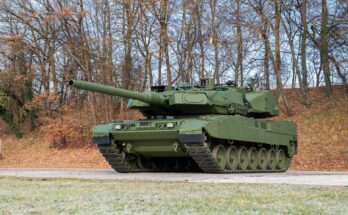by Bill Ostrove, International Military Markets Analyst, Forecast International.
While Brazil is a country largely at peace, it also maintains the largest defense budget in Latin America. Externally, Brazil’s military is responsible for defending the country’s territory. This became more important after Brazil discovered oil reserves off its coast, prompting investment in air and sea assets. Although Latin American countries are relatively free from conflict, the Brazilian military is still seen as a deterrent to other nations in the region. For example, many of Brazil’s current acquisition programs have been a response to Venezuelan purchases.
As the world has changed, so has the role of Brazil’s military. The public has demanded that the military provide more internal security rather than focusing on the traditional external threats. The need for internal security has been highlighted by the rise of terrorism. For example, in the days leading up to the 2016 Olympic Games held in Rio de Janeiro, Brazilian authorities discovered a terrorist plot linked to ISIS.
At first glance, it would appear that Brazil’s defense expenditures are steadily rising. Brazil is expected to spend BRL80.7 billion on defense in 2016, an increase from the BRL66.4 billion spent in 2012. However, the annualized growth of 4 percent has not kept up with inflation. When the figures are compared in U.S. dollars, there has been an annualized decline of 8.2 percent between 2012 and 2016.
Due to the severe economic crisis currently affecting Brazil, the government has been unable to raise defense spending enough to keep up with inflation. Brazil continues to make progress on a number of major acquisition programs, such as the FX-2 and KC-390; however, with budgets declining, future purchases will be limited.
Brazil’s largest expenditure is personnel expenses, including salaries for current members of the military as well as pensions for retired personnel. In its proposed 2016 budget, Brazil plans to spend BRL61.5 billion, or nearly 80 percent of all allocations, on personnel and social expenses. This is an increase from an already high 72.3 percent in 2015.
Without large budget increases, the money needed for personnel expenses is being taken almost entirely from Brazil’s capital investment allocation. Investments are expected to decline from BRL11.1 billion, or 14.5 percent of the budget, in 2015 to BRL7.5 billion, or 9.7 percent of the budget, in 2016. The decline in investment spending will significantly curtail Brazil’s ability to purchase new equipment and support its defense industry.
Still, not all is bleak for Brazil’s spending outlook. Brasilia continues to need equipment to protect its resources, borders, and immense territory. Government support of local industry will also continue to be important as the country looks to rebound from its economic crisis.
For those reasons, Forecast International expects defense spending to decline in 2016, but then start a slow climb back up. Between 2017 and 2021, defense spending will increase at a compound annual growth rate of 3.9 percent.
Please feel free to use this content with Forecast International and analyst attributions, along with a link to the article. Contact Ray Peterson at +1 (203) 426-0800 or via email at ray.peterson@forecast1.com for additional analysis.
The Forecast International International Military Markets series examines the military capabilities, equipment requirements, and force structures inventories of 140 countries, with corresponding coverage of the political and economic trends shaping the defense market outlook for individual countries and regions.
For 50 years, Forecast International intelligence reports have been the aerospace and defense industry standard for accurate research, analysis, and projections. Our experienced analysts compile, evaluate, and present accurate data for decision makers. FI's market research reports offer concise analysis of individual programs and identify market opportunities. Each report includes a program overview, detailed statistics, recent developments and a competitive analysis, culminating in production forecasts spanning 10 or 15 years. Let our market intelligence reports be a key part of reducing uncertainties and mastering your specific market and its growth potential. Find out more at www.forecastinternational.com



